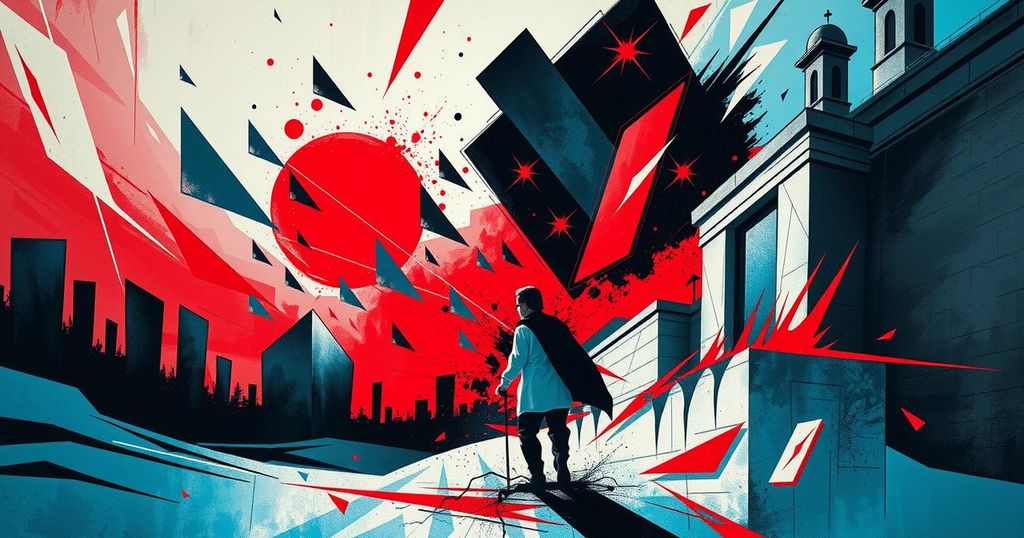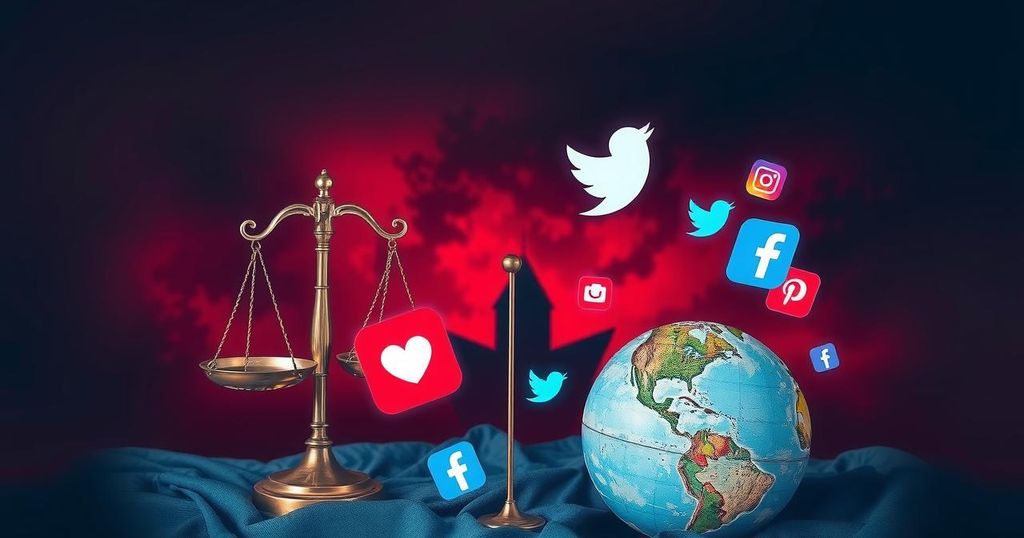cat 1
ALBUQUERQUE, BOULDER, COLO, DEMOCRATIC NATIONAL CONVENTION, ELECTION, GABBY GIFFORDS, GRETCHEN WHITMER, HOUSE, ISRAELI EMBASSY, JOSH SHAPIRO, MARK, MICHIGAN, MINNESOTA, NEW MEXICO, NORTH AMERICA, OHIO, PENNSYLVANIA, POLITICS, REPUBLICAN PARTY, STEVE SCALISE, TESLA, TRUMP ADMINISTRATION, U.S. ELECTIONS, UNITED STATES, UNITED STATES OF AMERICA, WASHINGTON
Liam Brooks
0 Comments
Like School Shootings, Political Violence Is Becoming Almost Routine
Political violence is becoming alarmingly routine in U.S. politics as evidenced by the recent assassination of a Minnesota lawmaker and growing threats against public officials. Amid horrific acts, leaders express condolences and advocate for increased security. The normalization of aggression raises concerns about the broader impacts on political discourse and democracy.
Political violence is sadly becoming an almost expected aspect of the political landscape in the United States, blurring lines between shock and a disturbing sense of normalcy. Following the recent assassination of a Minnesota lawmaker and her husband, alongside an assassination attempt on another lawmaker, expressions of shock poured in from political leaders. Representative Steve Scalise and former House Speaker Nancy Pelosi both shared their heartache, reflecting on personal experiences with political violence, while former Congresswoman Gabby Giffords noted her own painful history with targeted shootings.
The waves of violence in the political arena have only intensified. In recent months, various incidents have caught attention, from arson at Governor Josh Shapiro’s residence while he and his family were sleeping, to a shooting incident involving workers from the Israeli Embassy in Washington. More recently, two prominent individuals were shot in their home in Minnesota. This steady stream of violent acts against politicians or political critics underscores the somber reality that political violence is increasingly common, rather than an anomaly.
Representative Greg Landsman from Ohio echoed these anxieties, confessing that thoughts of being shot linger heavily in his mind during public appearances. “It’s still in my head. I don’t think it will go away,” he noted, emphasizing the mental burden carried by many politicians. Often, the reality of political violence resembles that of school shootings—a grim and unsettling scenario that American society seems to be adapting to, further solidifying a cycle of fear and aggression.
Additionally, violent threats against lawmakers have hit record highs for two consecutive years. More than 170 documented incidents of threats and harassment targeting local officials have occurred across nearly 40 states in just 2023. Surveys indicate a growing perception among Americans that rival political factions represent a significant threat, further muddying the already contentious political atmosphere.
The urgent calls for increased security measures mirror a familiar response pattern to such violence; statements of condemnation and offers of prayers surface, accompanied by a push for protective measures. Senator Chuck Schumer specifically highlighted the need for proactive security measures for members of Congress in light of this violence. He also cautioned against just denouncing these acts without addressing the underlying causes.
Minnesota Senator Amy Klobuchar linked the rise in political violence to growing partisanship and misinformation circulating online, urging elected officials to reconsider their rhetoric. She emphasized the need for reflection amongst politicians, pointing out that unchecked anger is leading to real-world consequences fueled by what constituents are absorbing online.
Violence directed towards politicians is not new; it has been intertwined with American political history for centuries. Four U.S. presidents have been killed in office, highlighting an undeniable legacy of violence in politics. However, more than ever, public sentiment has begun shifting toward viewing rival political groups as dehumanized threats. The environment fostered by previous political leaders, particularly Donald Trump, continues to exacerbate tensions, blurring the lines of acceptable political discourse.
This escalating wave of threats and violence leads to a chilling effect on free expression. Political scientist Lilliana Mason commented that political violence aims to silence dissent, extending beyond the direct impact on victims to instill a broader sense of fear that may hinder potential opposition. As the shooter’s manhunt unfolds in Minnesota, law enforcement has cautioned against demonstrations as a safety measure amid ongoing tensions surrounding the tragic events.
The recent wave of political violence in America reveals an unsettling shift toward viewing such acts as part of the political landscape. With threats reaching historic levels and politicians increasingly expressing fears for their safety, the rhetoric around political discourse needs serious re-evaluation. Leaders from both sides of the aisle have vowed for steps to enhance security, but the struggle extends beyond physical safety—it’s about confronting the cultural mindset that allows political violence to fester and grow.
Original Source: www.nytimes.com




Post Comment